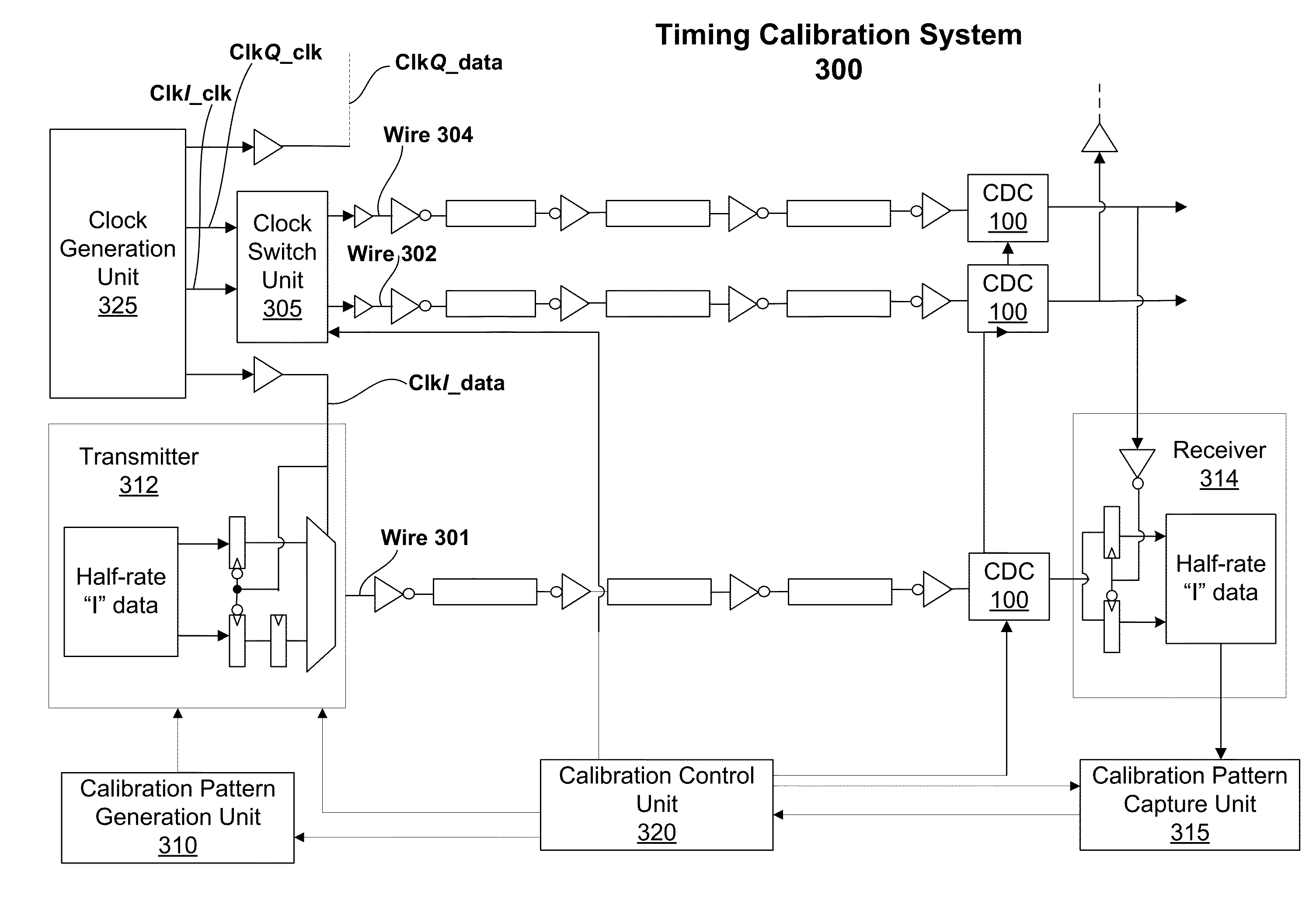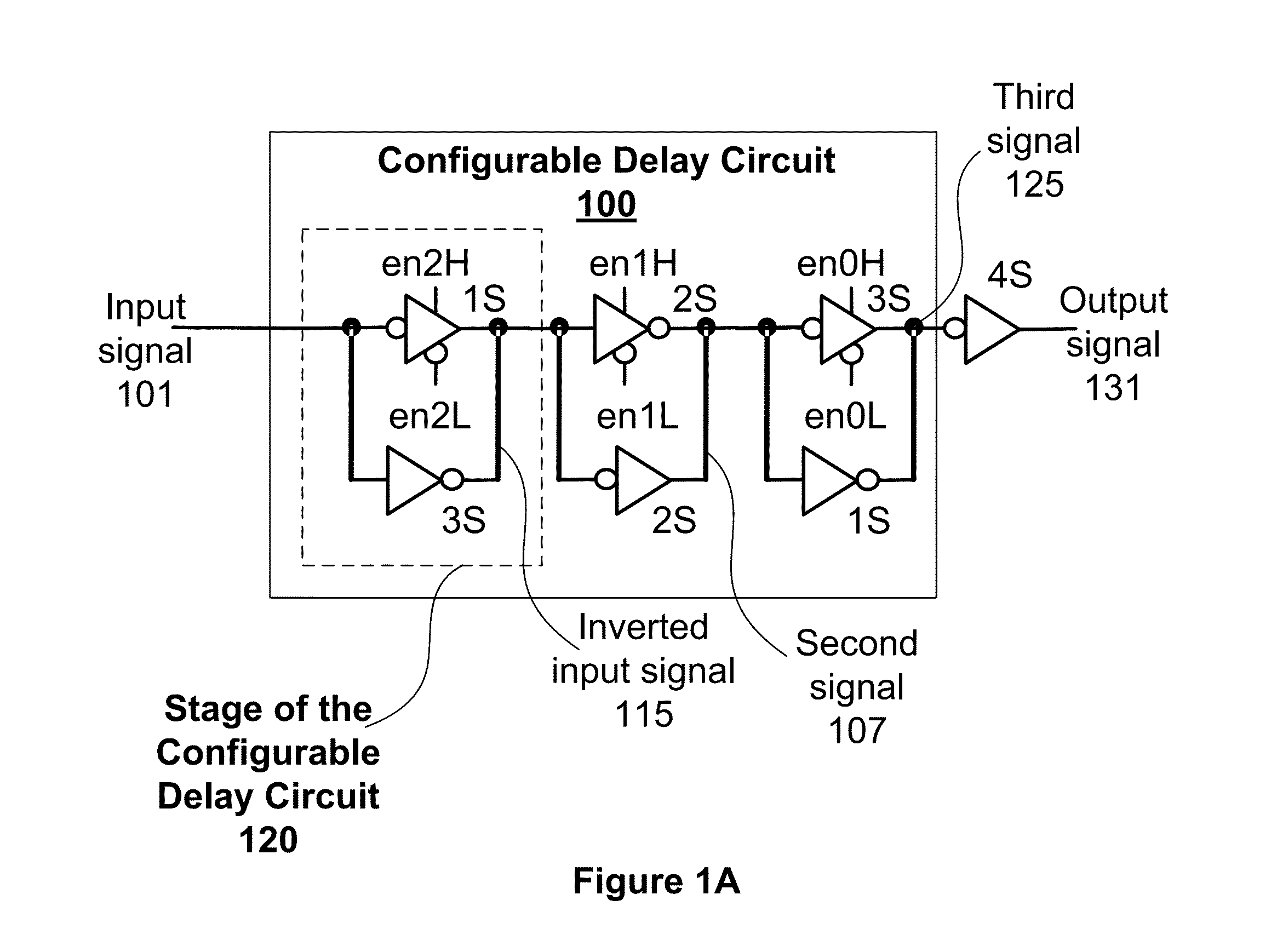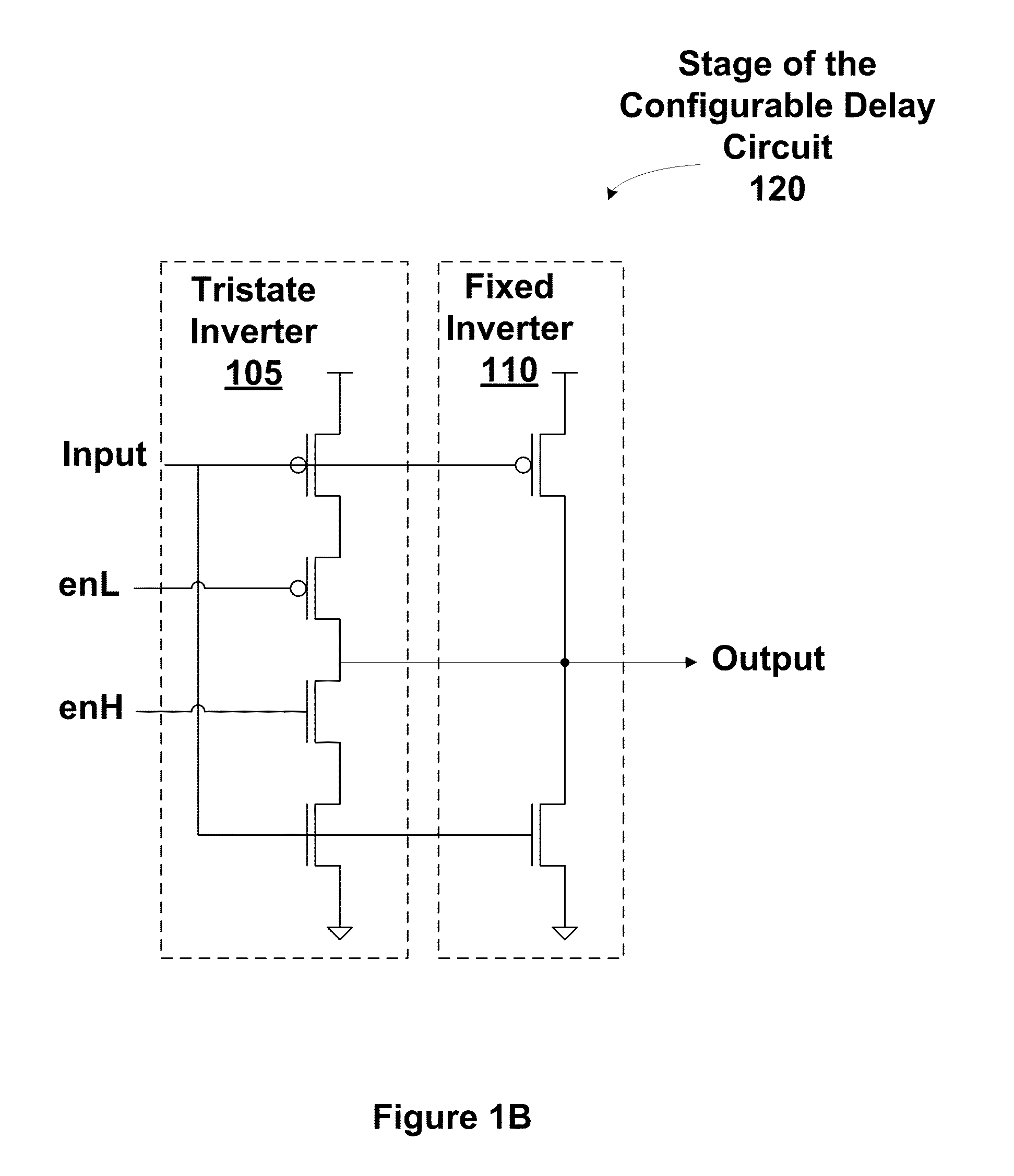Timing calibration for on-chip interconnect
- Summary
- Abstract
- Description
- Claims
- Application Information
AI Technical Summary
Benefits of technology
Problems solved by technology
Method used
Image
Examples
Embodiment Construction
[0032]In the following description, numerous specific details are set forth to provide a more thorough understanding of the present invention. However, it will be apparent to one of skill in the art that the present invention may be practiced without one or more of these specific details. In other instances, well-known features have not been described in order to avoid obscuring the present invention.
[0033]A configurable delay circuit can be used to correct mismatches in delays between signals such as between clock signals and data and between different bits of data within a multi-bit data bus. Misaligned clock edges relative to data signals can result in functional errors, e.g., timing errors. The configurable delay circuit may be used to align the clock relative to the data signals and ensure that timing requirements are better met.
[0034]Mismatches in delays between different signals of a multi-bit data bus present challenges for meeting the timing requirements to correctly sample...
PUM
 Login to View More
Login to View More Abstract
Description
Claims
Application Information
 Login to View More
Login to View More - R&D
- Intellectual Property
- Life Sciences
- Materials
- Tech Scout
- Unparalleled Data Quality
- Higher Quality Content
- 60% Fewer Hallucinations
Browse by: Latest US Patents, China's latest patents, Technical Efficacy Thesaurus, Application Domain, Technology Topic, Popular Technical Reports.
© 2025 PatSnap. All rights reserved.Legal|Privacy policy|Modern Slavery Act Transparency Statement|Sitemap|About US| Contact US: help@patsnap.com



